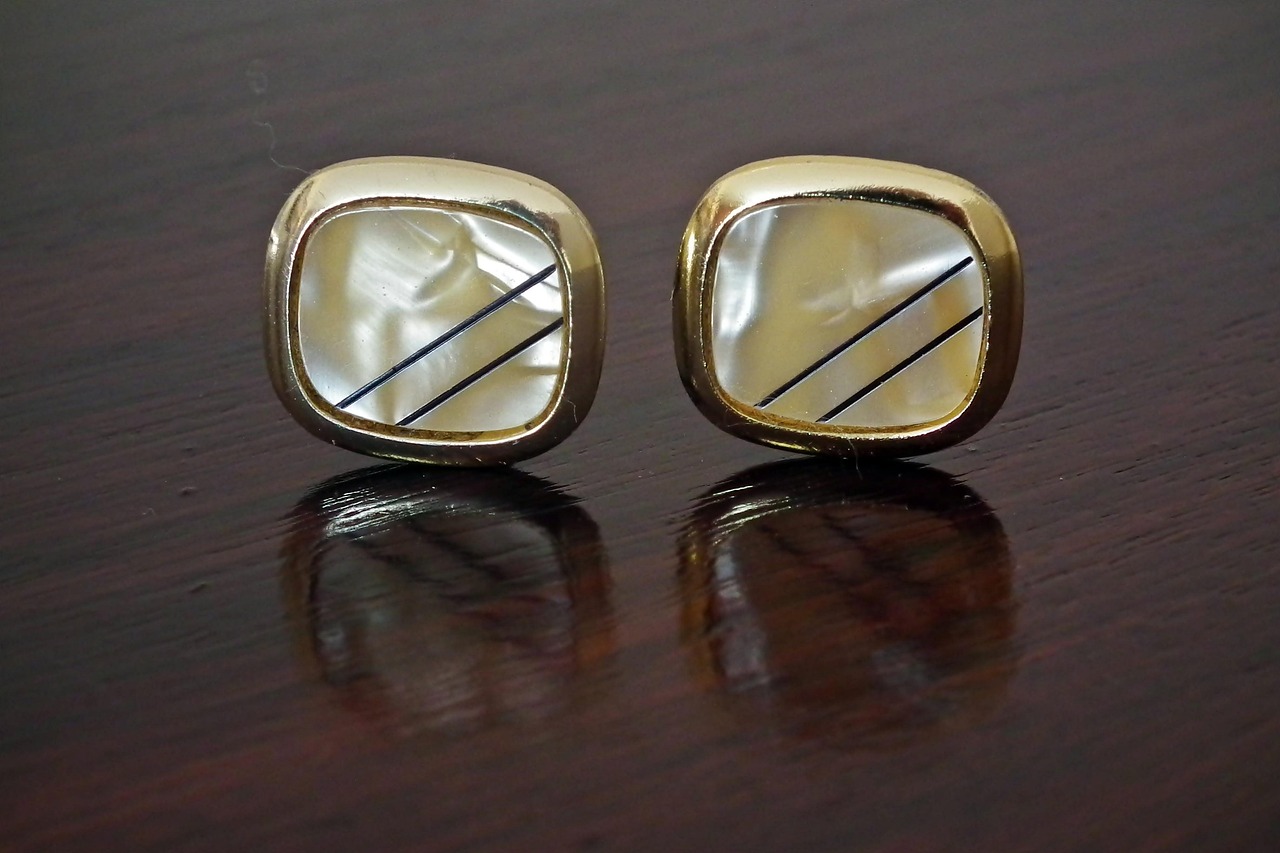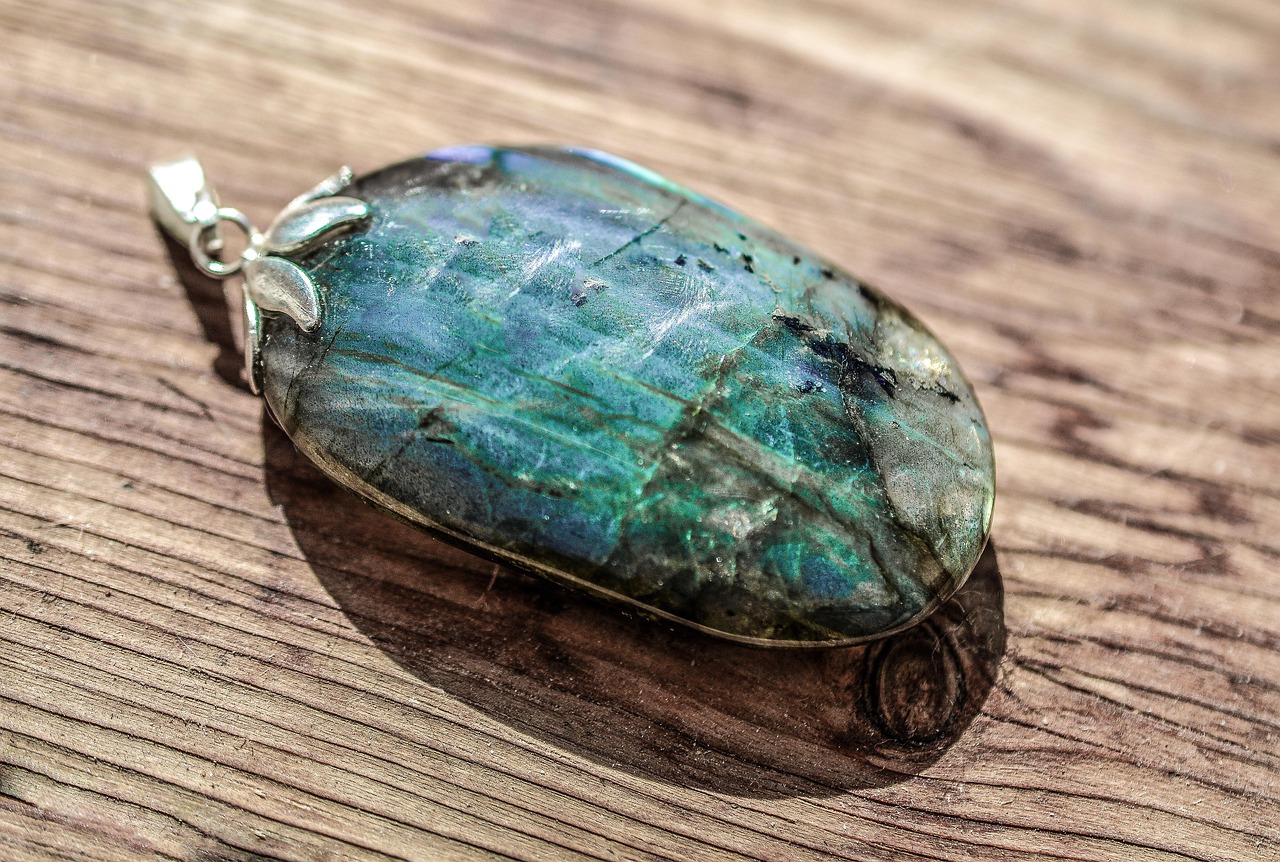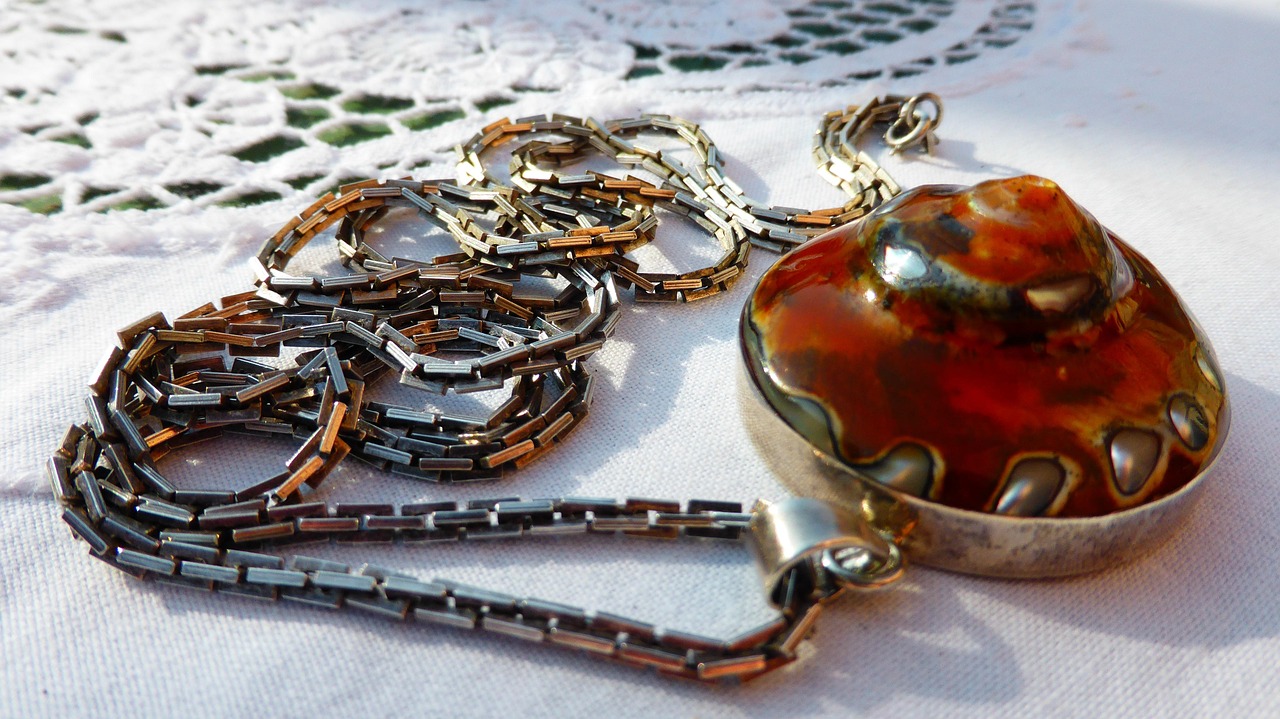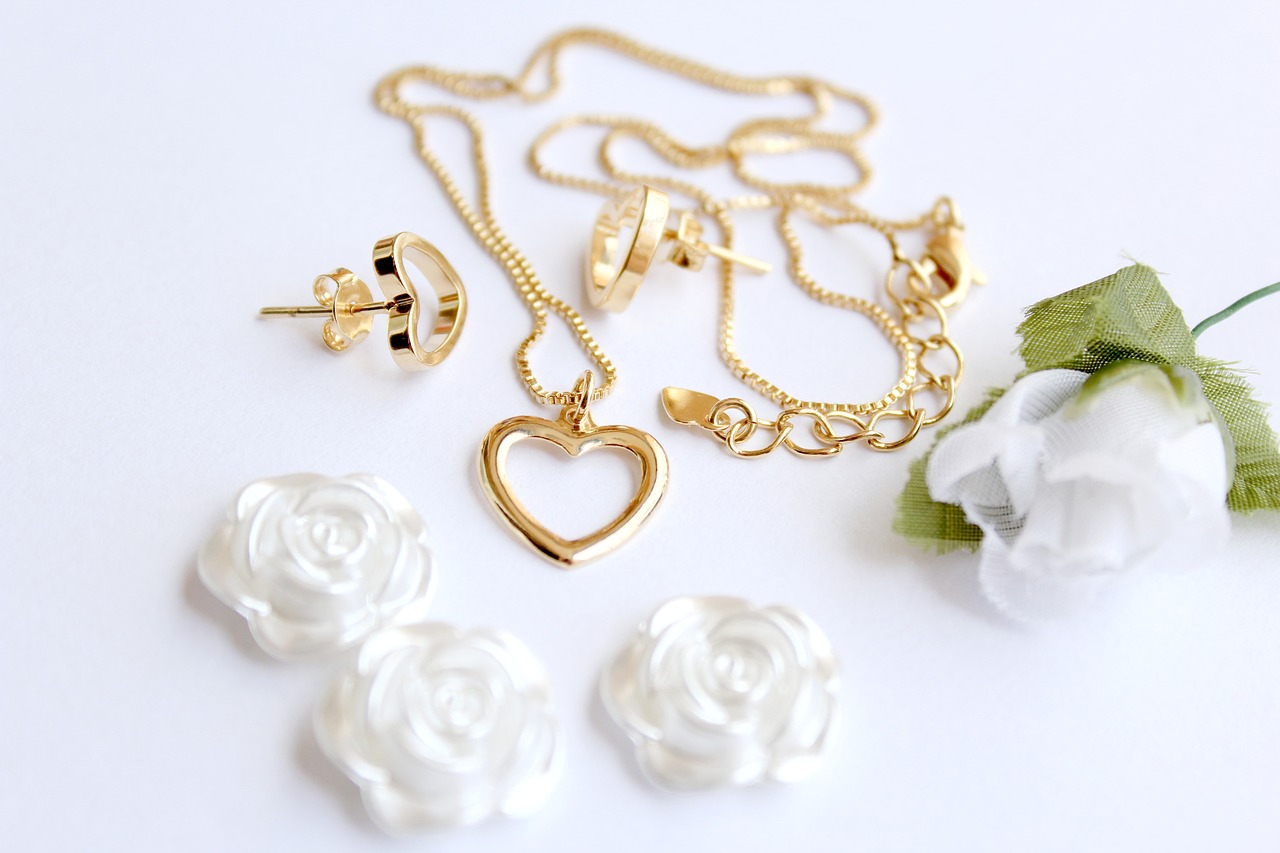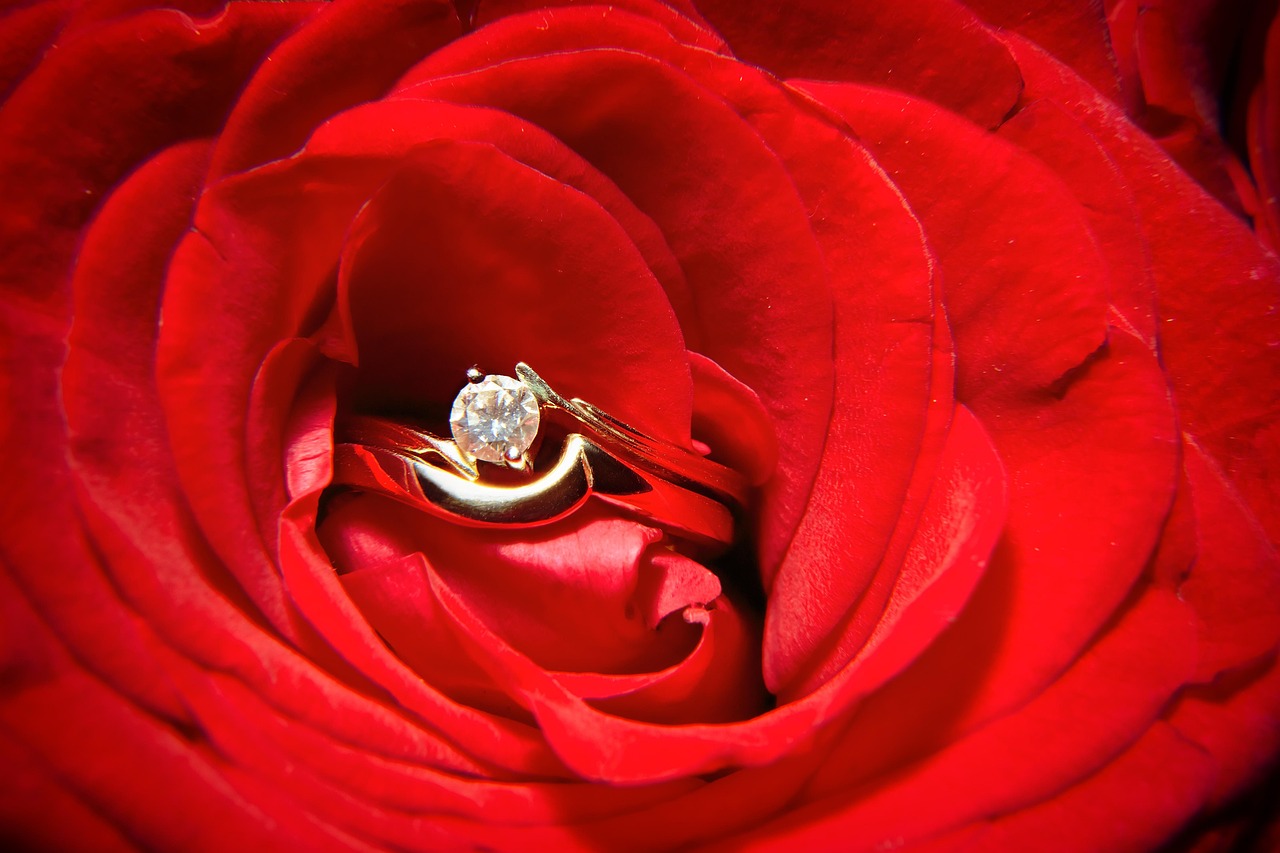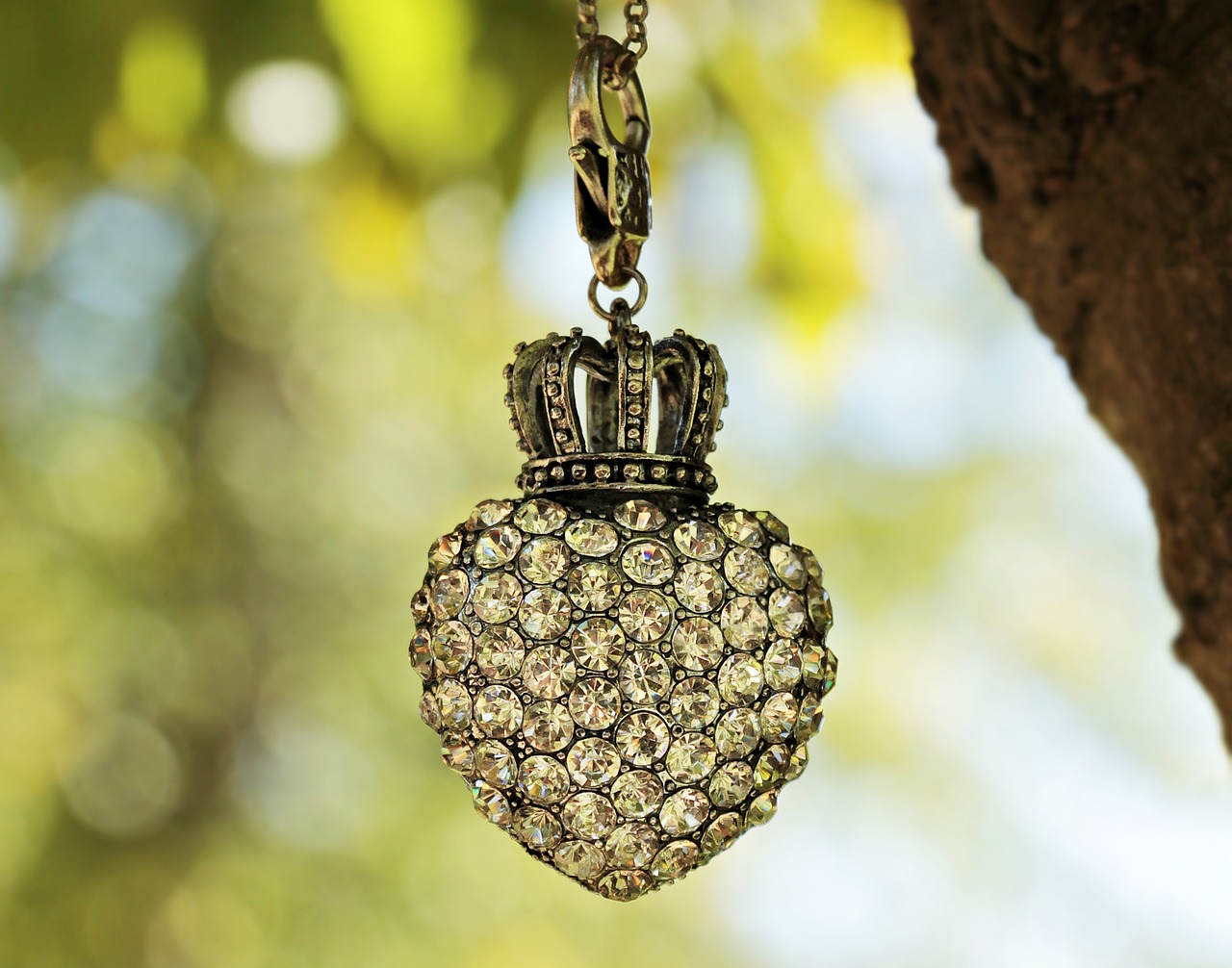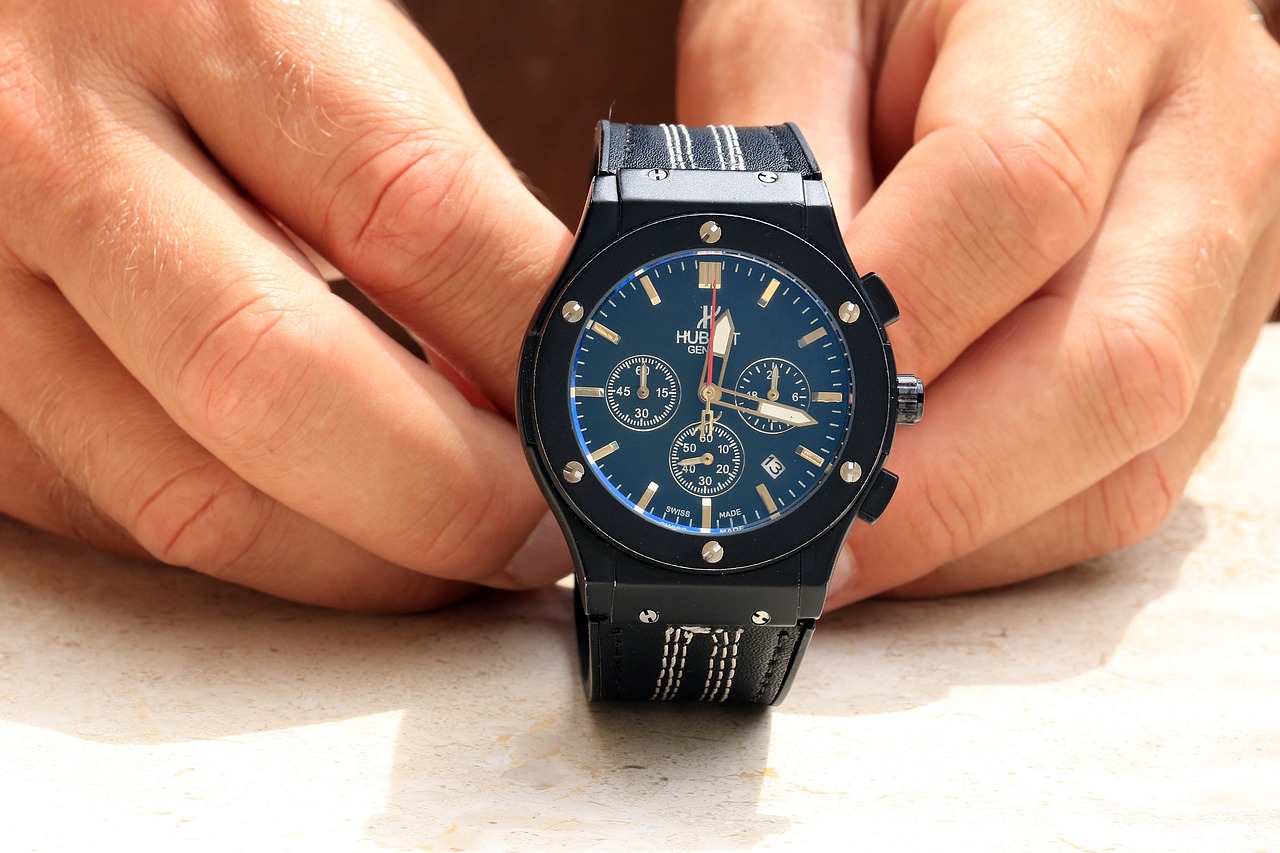This article delves into the dynamic relationship between evolving jewelry trends and their influence on the resale market. By examining various factors such as design, materials, and consumer preferences, we can better understand how the value of jewelry fluctuates over time.
What Are the Current Jewelry Trends?
To navigate the jewelry market effectively, it is essential to stay informed about current trends. Today, popular styles include minimalist designs, bold statement pieces, and sustainable jewelry made from recycled materials. Additionally, vintage aesthetics continue to captivate consumers, blending the old with the new.
How Do Trends Affect Jewelry Value?
The perceived value of jewelry is significantly influenced by trends. As consumer preferences shift, certain styles may see a surge in demand, leading to increased resale prices. For instance, a resurgence in Art Deco designs can elevate the worth of vintage pieces, while contemporary styles may decline in value as they become less fashionable.
The Role of Fashion Influencers
Fashion influencers are pivotal in shaping jewelry trends. Their endorsements can propel specific pieces into the spotlight, affecting consumer choices and, consequently, resale values. When an influencer showcases a particular brand or style, it can create a ripple effect, increasing demand and driving up prices.
Celebrity Endorsements and Jewelry
High-profile endorsements often elevate the status of specific jewelry items. When celebrities wear or promote certain pieces, it can lead to a surge in consumer interest, resulting in higher resale values for those items. This phenomenon illustrates the profound impact of celebrity culture on the jewelry market.
Social Media’s Influence on Trends
Platforms like Instagram and Pinterest play a crucial role in disseminating jewelry trends. Users frequently share their favorite pieces, creating a community-driven influence on consumer preferences. The visual nature of these platforms allows trends to spread rapidly, impacting the resale market as styles gain popularity.
Material Choices and Their Impact
The materials used in jewelry significantly affect resale value. Precious metals like gold and platinum, along with high-quality gemstones, contribute to a piece’s worth. For example, jewelry crafted from ethically sourced materials is increasingly sought after, reflecting consumer values and enhancing resale potential.
Are Vintage and Antique Pieces Still Popular?
The allure of vintage and antique jewelry remains strong among collectors and enthusiasts. These pieces often carry a unique history and craftsmanship that contemporary items may lack. As the demand for vintage styles increases, their resale values can also appreciate, making them a worthwhile investment.
Market Demand for Vintage Styles
Vintage styles often experience a resurgence in popularity, driven by nostalgia and a desire for unique pieces. Factors such as iconic fashion trends from past decades can spark renewed interest, leading to higher resale values for vintage jewelry.
Condition and Authenticity Considerations
The condition and authenticity of vintage jewelry are critical for determining resale value. Buyers are more likely to invest in pieces that are well-preserved and come with proof of authenticity. Thus, sellers should prioritize maintaining their jewelry and obtaining necessary documentation to enhance its marketability.
How Seasonal Trends Affect Resale Prices
Seasonal trends can lead to temporary spikes in resale prices. For example, during the holiday season, demand for jewelry often increases as consumers seek gifts for loved ones. Sellers can capitalize on these trends by timing their sales to coincide with peak shopping periods.
Holiday Demand and Special Collections
Certain holidays, like Valentine’s Day and Christmas, create heightened demand for jewelry. Brands often release special collections during these times, which can significantly impact resale values as consumers seek unique gifts.
Seasonal Color Trends
Color trends also vary with the seasons, influencing jewelry sales. For instance, pastel colors may dominate in spring, while rich jewel tones are favored in fall. Understanding these trends can help sellers choose pieces that align with current consumer preferences, maximizing their resale potential.
What to Consider When Reselling Jewelry?
Reselling jewelry requires careful consideration of various factors. Sellers should be aware of market timing, documentation, and the condition of their pieces to maximize resale value.
Timing Your Sale for Maximum Profit
Identifying the right time to sell jewelry is crucial for achieving optimal returns. Monitoring market trends and consumer behavior can help sellers determine the best moments to list their pieces.
Documentation and Provenance Importance
Having proper documentation enhances resale value. Buyers are more inclined to purchase items with a verified history, so sellers should ensure they have the necessary provenance and certification to instill buyer confidence.
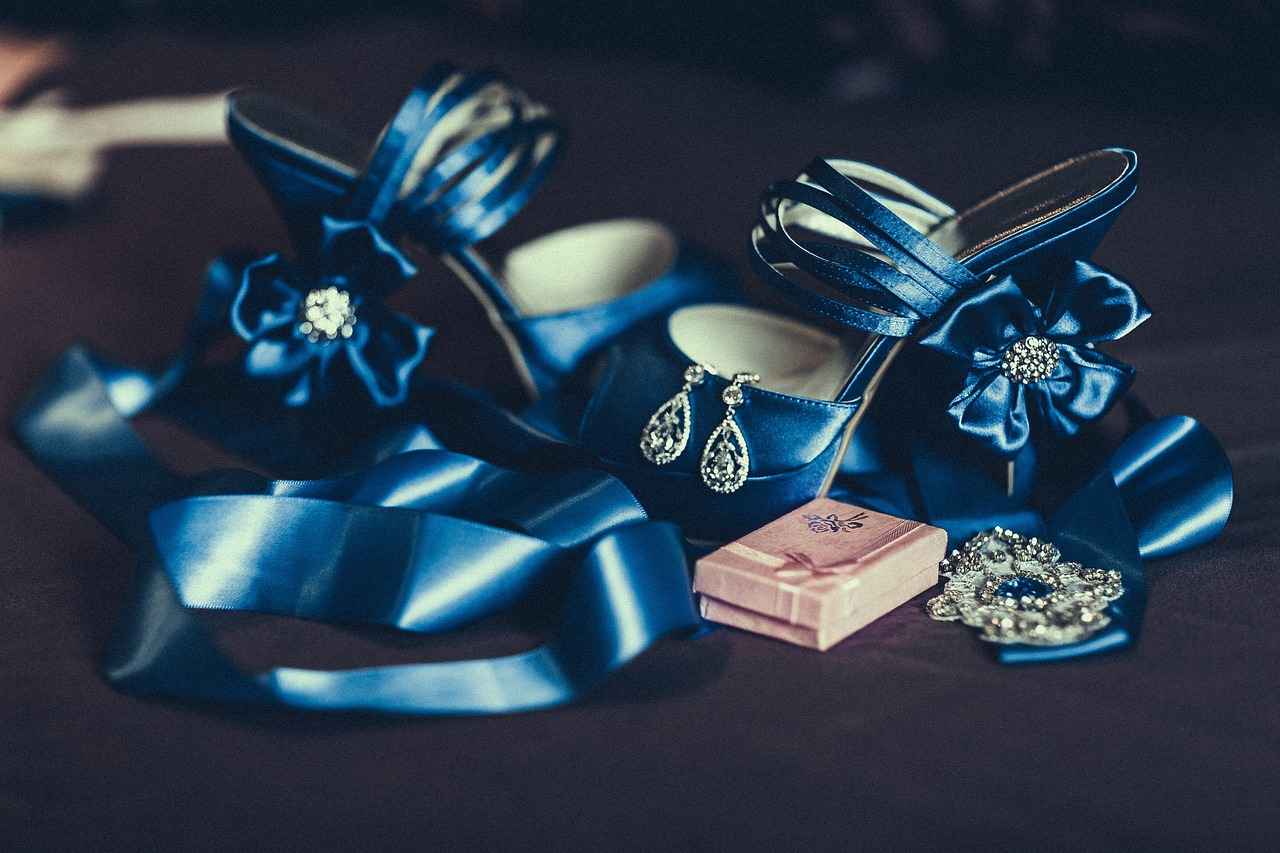
What Are the Current Jewelry Trends?
Understanding current jewelry trends is crucial for both buyers and sellers. As the jewelry market evolves, keeping up with popular styles, materials, and designs can significantly impact purchasing decisions and resale values. This section delves into the latest trends that are shaping the jewelry landscape today.
Current trends showcase a blend of classic elegance and modern flair. Layering necklaces and stacking rings have become increasingly popular, allowing individuals to express their personal style creatively. Additionally, chunky statement pieces are making a comeback, often featuring bold colors and unique shapes that stand out.
When it comes to materials, sustainability is at the forefront of consumer preferences. Recycled metals and ethically sourced gemstones are gaining traction as buyers become more environmentally conscious. Furthermore, lab-grown diamonds are rising in popularity, offering an ethical alternative without compromising on quality.
Innovative designs are redefining traditional jewelry. Geometric patterns and asymmetrical shapes are trending, providing a modern twist to classic pieces. Additionally, personalized jewelry that incorporates initials or birthstones is increasingly sought after as people look for unique ways to celebrate their individuality.
Cultural influences play a significant role in shaping jewelry trends. For instance, the resurgence of bohemian styles reflects a broader movement towards natural and artisanal aesthetics. This trend is characterized by the use of organic materials, such as wood and beads, often handcrafted to add a personal touch.
Fashion influencers and social media platforms are pivotal in driving jewelry trends. Platforms like Instagram and TikTok allow influencers to showcase the latest styles, creating a ripple effect on consumer preferences. The visibility of jewelry on these platforms can lead to increased demand, significantly impacting resale values.
Jewelry trends often shift with the seasons. For example, during the spring and summer months, lighter and more colorful pieces become popular, while autumn and winter see a rise in richer, deeper tones. Understanding these seasonal shifts can help buyers and sellers make informed decisions about timing their purchases and sales.
Staying informed about current jewelry trends is essential for both buyers and sellers in the ever-evolving market. By understanding popular styles, materials, and designs, individuals can make more informed decisions that reflect their personal tastes and investment strategies. As trends continue to change, keeping a pulse on the market will ensure that both buyers and sellers can navigate the jewelry landscape effectively.
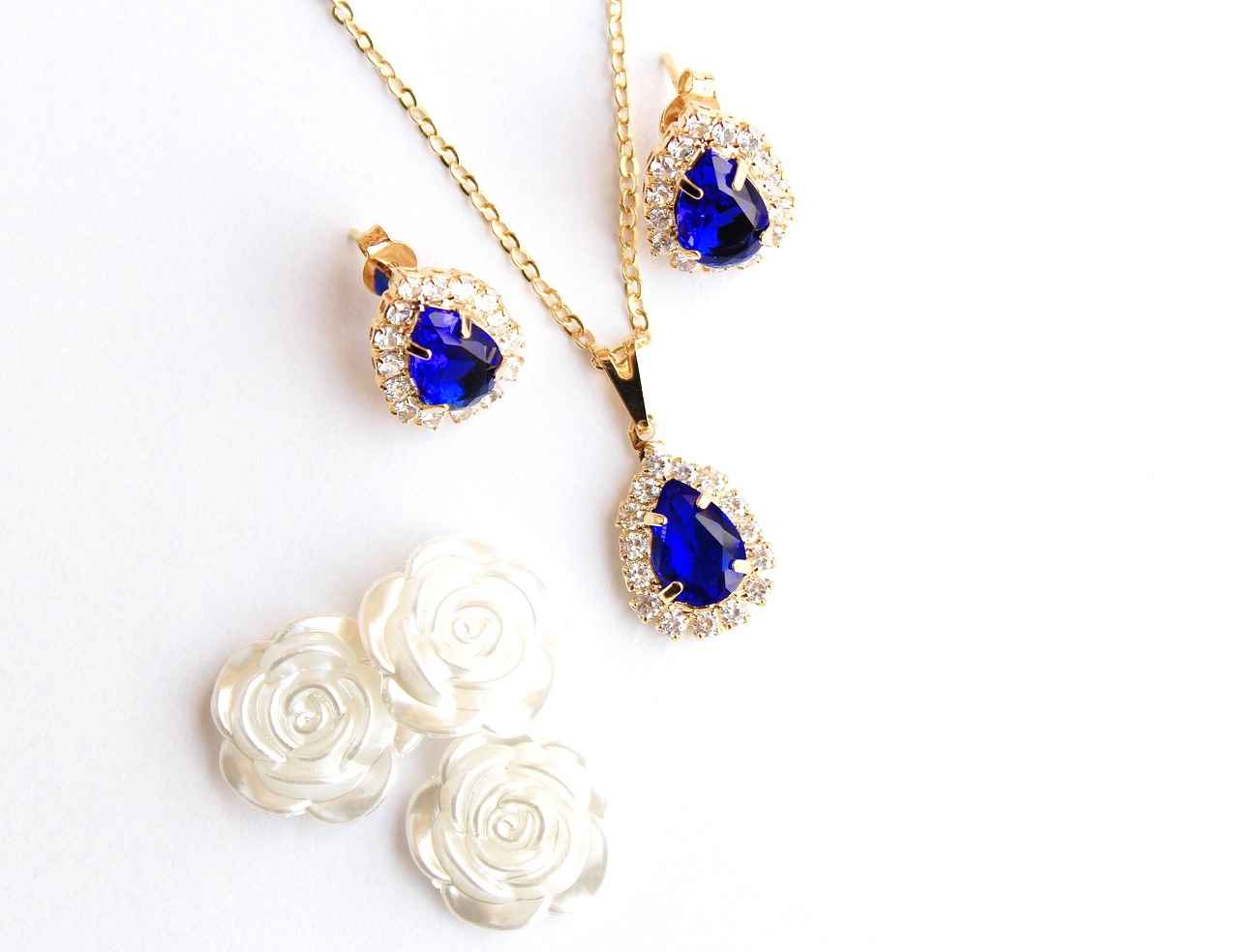
How Do Trends Affect Jewelry Value?
Trends in the jewelry industry play a pivotal role in determining the perceived value of various pieces. As consumer preferences evolve, the demand for certain styles, materials, and designs fluctuates, leading to significant changes in resale prices. This section delves into the intricate relationship between jewelry trends and their impact on market value.
As fashion evolves, so do the preferences of consumers. The jewelry market is not immune to these shifts; in fact, it often reflects broader cultural and social movements. For instance, the rise of sustainable and ethically sourced materials has transformed how consumers view value in jewelry. Buyers are increasingly inclined to pay a premium for pieces that align with their values, such as those made from recycled metals or conflict-free gemstones.
Several factors drive changes in consumer preferences, including:
- Fashion Trends: The cyclical nature of fashion means that certain styles come in and out of favor. For example, the resurgence of vintage styles often leads to increased demand for specific pieces, which can spike their resale value.
- Celebrity Influence: High-profile endorsements can catapult certain jewelry brands or styles into the spotlight, significantly impacting their desirability and, consequently, their resale prices.
- Social Media: Platforms like Instagram and Pinterest are instrumental in shaping consumer tastes. Influencers showcase new designs, which can lead to a rapid increase in demand for specific jewelry styles.
Seasonality also plays a critical role in jewelry resale value. For instance, during the holiday season, there is typically a surge in demand for engagement rings and other gift items. This seasonal spike can lead to temporary increases in resale prices, making it advantageous for sellers to time their sales carefully.
The materials used in jewelry significantly influence its resale value. Precious metals such as gold, platinum, and silver generally retain their worth well, while the quality and rarity of gemstones can also impact pricing. For instance, a piece made with a rare diamond will likely see a higher resale value compared to one with more common stones.
The allure of vintage and antique jewelry remains strong in today’s market. Many consumers are drawn to the unique craftsmanship and history behind these pieces, which can enhance their value. Moreover, vintage styles often experience a resurgence, leading to increased demand and higher resale prices.
The condition of a piece and its authenticity are crucial factors influencing resale value. Jewelry that is well-maintained and comes with proper documentation, such as certificates of authenticity, is more likely to command higher prices. Buyers are often wary of purchasing items without verification of their authenticity, making provenance a vital consideration.
In summary, the interplay between evolving trends and consumer preferences significantly shapes the jewelry market. By understanding these dynamics, both buyers and sellers can make informed decisions that reflect current market conditions and maximize their investments.
The Role of Fashion Influencers
Fashion influencers have become pivotal in the world of jewelry, significantly shaping trends and consumer choices. As key players in the fashion industry, these influencers utilize their platforms to showcase various jewelry styles, materials, and brands, ultimately guiding public perception and preferences. Their impact extends beyond mere aesthetics; it influences the resale market and the value of jewelry pieces over time.
Fashion influencers are often seen as trendsetters, using their reach on social media platforms like Instagram, TikTok, and Pinterest to introduce and popularize specific jewelry styles. They curate their personal styles, often featuring unique pieces from emerging designers or established brands, which can lead to a surge in demand. For instance, when an influencer showcases a particular necklace or ring, their audience may rush to purchase similar items, creating a ripple effect in the market.
Indeed, the choices of fashion influencers can significantly impact consumer behavior. Their endorsements can transform niche jewelry brands into household names almost overnight. The power of social proof plays a crucial role here; when followers see their favorite influencers wearing certain pieces, they are more likely to perceive those items as desirable. This phenomenon can lead to increased sales for featured brands and higher resale values for popular items.
The influence of fashion influencers extends into the resale market as well. Jewelry pieces that gain popularity through influencer promotion often see a corresponding increase in their resale values. For example, if a specific designer’s earrings are widely featured by influencers, the demand for those earrings can skyrocket, leading to higher prices in the resale market. This trend highlights the importance of brand visibility and consumer perception in determining jewelry value.
Alongside fashion influencers, celebrity endorsements play a crucial role in shaping jewelry trends. When a celebrity is spotted wearing a particular piece, it often leads to immediate spikes in consumer interest. This phenomenon can drive demand and elevate resale values, making certain pieces highly sought after. The interplay between influencer marketing and celebrity endorsements creates a powerful dynamic that significantly influences the jewelry market.
Social media platforms serve as essential tools for trend dissemination. Influencers leverage these platforms to share their jewelry collections, styling tips, and personal experiences with different brands. This exposure allows consumers to engage with trends in real-time, making them more likely to purchase trendy pieces. The visual nature of platforms like Instagram makes them particularly effective for showcasing jewelry, enabling influencers to create aspirational content that resonates with their audience.
While following trends can lead to increased resale values, there are inherent risks. Jewelry trends can be fleeting, and what is popular today may not hold the same value tomorrow. Consumers should be mindful of this volatility and consider the longevity of their purchases. Investing in timeless pieces alongside trendy items can help mitigate potential losses in resale value.
In summary, the role of fashion influencers in shaping jewelry trends is undeniable. Their impact on consumer choices and resale values highlights the interconnectedness of social media, celebrity endorsements, and market dynamics. As trends continue to evolve, both buyers and sellers must remain informed about the influences at play in the jewelry market.
Celebrity Endorsements and Jewelry
Celebrity endorsements have become a powerful tool in the jewelry industry, significantly influencing consumer behavior and market dynamics. High-profile figures, from actors to musicians, often showcase specific jewelry pieces, leading to a surge in demand and affecting resale prices. This section delves into the mechanisms through which celebrity endorsements elevate the status of jewelry and shape market trends.
When a celebrity is seen wearing a particular piece of jewelry, it can create an immediate and substantial increase in consumer interest. Fans and followers often aspire to emulate their favorite stars, leading to a spike in demand for similar items. The visibility provided by celebrities can transform a piece of jewelry from a simple accessory into a coveted item, driving its popularity across various demographics.
The resale market for jewelry is highly sensitive to trends and celebrity influence. When a piece is associated with a well-known figure, its perceived value can increase significantly. For example, if a celebrity wears a unique necklace at a major event, the resale price of that necklace can skyrocket due to heightened demand. Collectors and investors are often willing to pay a premium for pieces linked to celebrities, further driving up prices.
In today’s digital age, social media platforms play a crucial role in amplifying the impact of celebrity endorsements. A single post on Instagram or Twitter can reach millions, creating a buzz around certain jewelry pieces almost instantaneously. This rapid dissemination of information not only influences consumer purchasing decisions but also sets the stage for future resale values.
- Luxury Brands: High-end brands often see the most significant impact from celebrity endorsements. When a luxury brand is endorsed by a celebrity, it can lead to increased sales and higher resale values.
- Emerging Designers: Even lesser-known designers can experience a surge in popularity if a celebrity chooses to wear their jewelry, showcasing the power of endorsements for brand visibility.
- Fashion Collaborations: Collaborations between celebrities and jewelry brands often result in limited-edition pieces that become highly sought after in the resale market.
Investing in celebrity-endorsed jewelry can be a double-edged sword. While the initial hype can lead to significant resale value, market fluctuations and changing trends can also affect long-term worth. Buyers should consider factors such as the celebrity’s lasting influence and the uniqueness of the piece before making a purchase.
In conclusion, celebrity endorsements play a pivotal role in shaping the jewelry market. They not only drive demand but also significantly impact resale prices. As consumers become increasingly influenced by social media and celebrity culture, the importance of these endorsements in the jewelry industry is likely to grow. Understanding this relationship can help both buyers and sellers navigate the complex landscape of jewelry resale.
Social Media’s Influence on Trends
Social media platforms have transformed the way trends are disseminated and consumed, particularly in the jewelry industry. Platforms such as Instagram and Pinterest are not just spaces for sharing images; they have become pivotal in shaping consumer preferences and influencing purchasing behaviors. This section delves into how these platforms impact jewelry trends and ultimately affect the resale market.
Social media platforms serve as a visual marketplace where users can discover and engage with the latest jewelry styles. On Instagram, for instance, hashtags like #JewelryTrends and #JewelryInspo allow users to explore a plethora of styles, from minimalist designs to extravagant statement pieces. This accessibility enables consumers to identify and adopt trends quickly, effectively accelerating the cycle of fashion.
Influencers play a significant role in promoting jewelry trends through their curated feeds. With their ability to reach vast audiences, they can effectively amplify brand messages and introduce new styles to consumers. When a popular influencer showcases a particular piece of jewelry, it often leads to a surge in demand, thereby impacting resale values. For instance, if a well-known fashion influencer wears a vintage piece, it can spark renewed interest in similar items, increasing their desirability in the resale market.
The highly visual nature of platforms like Pinterest allows users to save and share images of jewelry that resonate with them. This process of curation not only influences individual preferences but also creates trends that can spread virally. Jewelry brands are increasingly leveraging this engagement by creating visually appealing content that encourages sharing, thus broadening their reach and enhancing brand loyalty.
User-generated content (UGC) has become a vital aspect of social media marketing. When customers post photos of themselves wearing jewelry, it creates a sense of authenticity and relatability. This organic promotion can lead to increased interest in specific styles, driving up demand and potentially affecting resale prices. Consumers are more likely to purchase items that they see others enjoying, making UGC a powerful tool in the jewelry market.
Social media also plays a crucial role in highlighting seasonal trends. As holidays approach, platforms become inundated with themed jewelry ideas, which can lead to spikes in consumer interest. For example, during the holiday season, posts featuring sparkling gemstones or festive designs can create a sense of urgency among buyers, influencing their purchasing decisions and impacting resale values.
In summary, social media platforms are not just tools for communication; they are powerful influencers in the jewelry market. By shaping trends, amplifying influencer marketing, and fostering user engagement, platforms like Instagram and Pinterest significantly impact consumer preferences. As trends evolve, so too do the dynamics of the resale market, making it essential for both buyers and sellers to stay informed about these changes.
Material Choices and Their Impact
The materials used in jewelry play a crucial role in determining its overall value and resale potential. Understanding how different materials contribute to worth can help both buyers and sellers navigate the jewelry market effectively.
Precious metals such as gold, silver, and platinum are fundamental to the jewelry industry. Their intrinsic value is determined by market demand, rarity, and purity. For instance, gold jewelry is often evaluated based on its karat weight, which indicates the metal’s purity. Higher karat gold, such as 18K or 24K, tends to fetch a higher resale price due to its greater gold content.
Gemstones are another significant factor influencing jewelry value. The type, quality, and rarity of gemstones can dramatically affect a piece’s worth. For example, diamonds are graded based on the Four Cs: cut, color, clarity, and carat weight. A diamond with excellent cut and clarity will command a much higher price than one of lower quality.
Beyond materials, the craftsmanship involved in creating jewelry also affects its resale value. Handcrafted pieces or those made by renowned artisans often carry a premium. This is because skilled craftsmanship can enhance both the aesthetic appeal and durability of the jewelry, making it more desirable to collectors and buyers.
In recent years, ethical sourcing has become increasingly important to consumers. Jewelry made from conflict-free diamonds or recycled metals may appeal to environmentally conscious buyers, potentially increasing its resale value. As awareness of ethical practices grows, pieces that adhere to these standards may see a surge in demand.
Jewelry trends can significantly impact which materials are deemed valuable at any given time. For instance, the rise of minimalist designs has led to an increased interest in sterling silver and rose gold, while bold statement pieces featuring colored gemstones can also see spikes in popularity. Keeping an eye on current trends can help sellers time their resale for maximum profit.
The condition of the jewelry is paramount when assessing its resale value. Well-maintained pieces that show minimal signs of wear are likely to command higher prices. Regular cleaning and proper storage can help preserve the integrity of both metals and gemstones, ensuring that they remain appealing to potential buyers.
Having proper documentation for jewelry, such as certificates of authenticity or appraisals, can significantly enhance its resale value. Documentation provides potential buyers with assurance regarding the quality and provenance of the piece, making them more likely to invest. In a competitive market, this added layer of trust can be invaluable.
In summary, the materials chosen for jewelry, along with their quality, craftsmanship, and ethical considerations, play a significant role in determining resale value. By understanding these factors, both buyers and sellers can make informed decisions in the jewelry market.
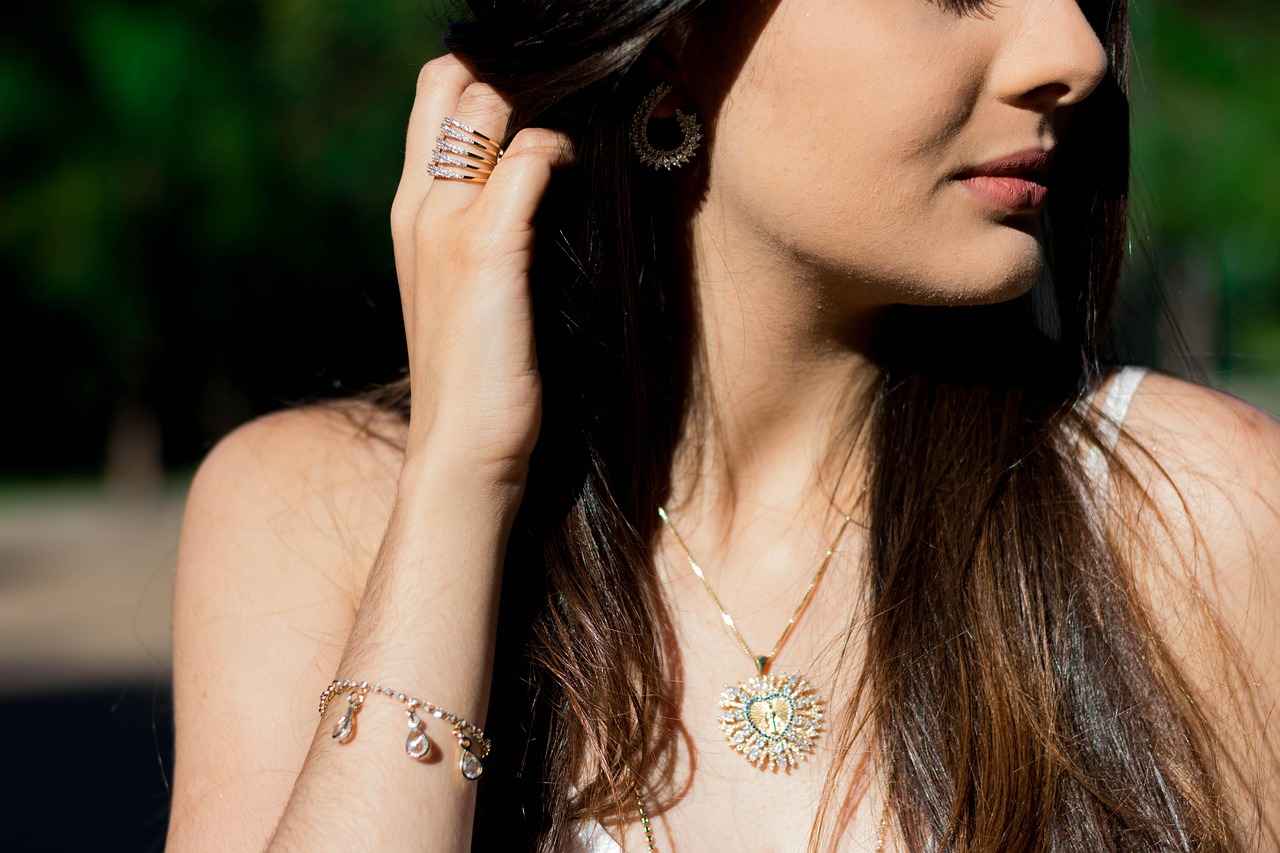
Are Vintage and Antique Pieces Still Popular?
The world of jewelry is ever-evolving, yet the charm of vintage and antique jewelry continues to captivate collectors and enthusiasts alike. In this section, we delve into the enduring appeal of these timeless pieces, examining their resale value in comparison to contemporary items. Understanding the dynamics of the market can help both buyers and sellers navigate their choices effectively.
One of the primary reasons vintage and antique jewelry remains popular is its unique craftsmanship and historical significance. Unlike mass-produced contemporary pieces, vintage jewelry often showcases intricate designs and high-quality materials that are hard to replicate. Many collectors are drawn to the stories behind these pieces, which can add to their emotional value and, consequently, their resale price.
When assessing the resale value of vintage and antique jewelry versus contemporary items, several factors come into play:
- Rarity: Vintage pieces are often more limited in availability, which can drive up their value.
- Design Trends: Certain vintage styles may resonate more with current fashion trends, making them more desirable.
- Quality of Materials: Many vintage pieces are made from higher-quality materials than some contemporary items, influencing their market price.
The condition and authenticity of vintage jewelry are paramount when determining resale value. Buyers are often willing to pay a premium for pieces that are in excellent condition and come with proper documentation, such as certificates of authenticity or appraisals. Additionally, the provenance of the piece—its history and previous ownership—can significantly enhance its value.
Recent years have seen a resurgence in the popularity of vintage and antique jewelry, particularly among younger generations who value sustainability and individuality. This trend has been fueled by social media and the influence of fashion icons who often showcase vintage pieces. As a result, many vintage styles are experiencing a revival, leading to increased demand and, in turn, higher resale prices.
Seasonal trends can also play a role in the resale market for vintage jewelry. For instance, during the holiday season, there is typically a spike in demand for unique gifts, which can lead to higher prices for vintage pieces. Similarly, fashion seasons can influence the desirability of certain styles, as collectors often seek out pieces that align with current trends.
Sellers looking to maximize their profits from vintage jewelry should consider the following:
- Timing: Understanding market trends can help sellers identify the best times to list their pieces.
- Documentation: Providing detailed information about the piece’s history and authenticity can enhance buyer confidence and lead to better offers.
- Presentation: High-quality photographs and descriptions that highlight the unique features of the jewelry can attract more potential buyers.
In conclusion, the allure of vintage and antique jewelry is not just a passing trend; it is a testament to the enduring value of craftsmanship and history. As the market continues to evolve, these pieces remain a significant player, often outperforming contemporary items in terms of resale value.
Market Demand for Vintage Styles
The resale market for jewelry has seen a notable shift in consumer preferences, particularly towards vintage styles. Understanding the factors that drive this demand can provide valuable insights for both buyers and sellers. In this section, we will explore the various elements contributing to the rising popularity of vintage jewelry and how these pieces are perceived in today’s market.
One of the primary reasons for the resurgence of vintage jewelry lies in the growing appreciation for craftsmanship and unique designs. Unlike mass-produced contemporary pieces, vintage jewelry often showcases intricate details and artistry that are hard to replicate. Consumers are increasingly seeking items that tell a story and reflect their individuality, making vintage pieces particularly appealing.
- Environmental Consciousness: With a rising awareness of sustainability, many consumers prefer vintage items as a way to reduce waste and promote recycling.
- Nostalgia: The emotional connection to past eras often influences purchasing decisions. Vintage jewelry can evoke feelings of nostalgia, making it more desirable.
- Celebrity Influence: As celebrities and influencers flaunt vintage pieces, their popularity skyrockets. High-profile endorsements can drive demand significantly.
The resale market for vintage jewelry operates differently than that of contemporary pieces. Factors such as condition, authenticity, and provenance play crucial roles in determining the value of vintage items. Buyers are often willing to pay a premium for pieces that are well-preserved and come with verifiable histories.
When purchasing vintage jewelry, buyers should consider the following:
- Condition: The state of the jewelry can significantly impact its value. Look for signs of wear and tear, and inquire about any repairs.
- Authenticity: Ensure that the piece is authentic and not a reproduction. Ask for documentation or certification if available.
- Market Trends: Stay informed about current market trends, as the demand for specific styles can fluctuate.
While vintage jewelry can be a worthwhile investment, there are inherent risks. The market can be volatile, and the value of pieces may not always appreciate. Additionally, buyers should be cautious of fakes and reproductions that can mislead even experienced collectors.
As consumer preferences continue to evolve, the demand for vintage jewelry is expected to grow. The combination of sustainability, nostalgia, and unique design will likely keep vintage pieces in high demand. Sellers who can effectively market their items and highlight their unique attributes will find success in this burgeoning market.
In conclusion, the resale market for vintage jewelry reflects a broader cultural shift towards valuing individuality and sustainability. Understanding the factors driving demand can help both buyers and sellers navigate this dynamic market effectively.
Condition and Authenticity Considerations
The condition and authenticity of vintage jewelry are paramount factors in determining its resale value. Understanding these aspects can significantly impact pricing and buyer interest in the competitive jewelry market.
The condition of a piece refers to its physical state, including any signs of wear, damage, or restoration. Jewelry that is well-preserved, with minimal scratches or tarnishing, commands a higher price. Buyers are often willing to pay a premium for pieces that show signs of minimal wear, as these are perceived as more desirable and collectible.
- Original components: Jewelry that retains its original stones and settings is usually more valuable.
- Repairs: Professional repairs can enhance value, but poorly executed repairs may detract from it.
- Documentation: Provenance and repair history can influence buyer confidence and, consequently, the price.
Authenticity is another critical aspect that can make or break a sale. Vintage jewelry that is verified as authentic by reputable appraisers or comes with original documentation tends to have a higher market value. Counterfeit or misrepresented pieces can lead to significant financial losses for buyers.
- Certification: Pieces with certificates from recognized organizations are more likely to fetch higher prices.
- Brand recognition: Jewelry from well-known designers or brands carries an inherent value that can increase resale prices.
- Market trust: Buyers are more inclined to purchase pieces that have a verified authenticity, thus enhancing resale opportunities.
Purchasing non-authentic pieces poses various risks, including:
- Financial loss: Overpaying for a counterfeit piece can lead to significant financial setbacks.
- Legal issues: In some cases, selling counterfeit jewelry can lead to legal repercussions.
- Loss of trust: Buyers may become hesitant to invest in vintage jewelry if they have previously encountered fraud.
To maximize resale value, it’s crucial to take proactive steps in ensuring both condition and authenticity. Here are some practical tips:
- Consult experts: Work with appraisers or jewelers who specialize in vintage pieces to assess condition and authenticity.
- Research: Familiarize yourself with the specific characteristics of the brand or designer you are interested in.
- Keep records: Maintain documentation of any repairs, appraisals, and provenance to enhance buyer confidence.
In summary, the condition and authenticity of vintage jewelry are critical elements that can significantly impact its resale value. By understanding these factors and taking necessary precautions, sellers can better navigate the jewelry market and achieve optimal pricing for their pieces.
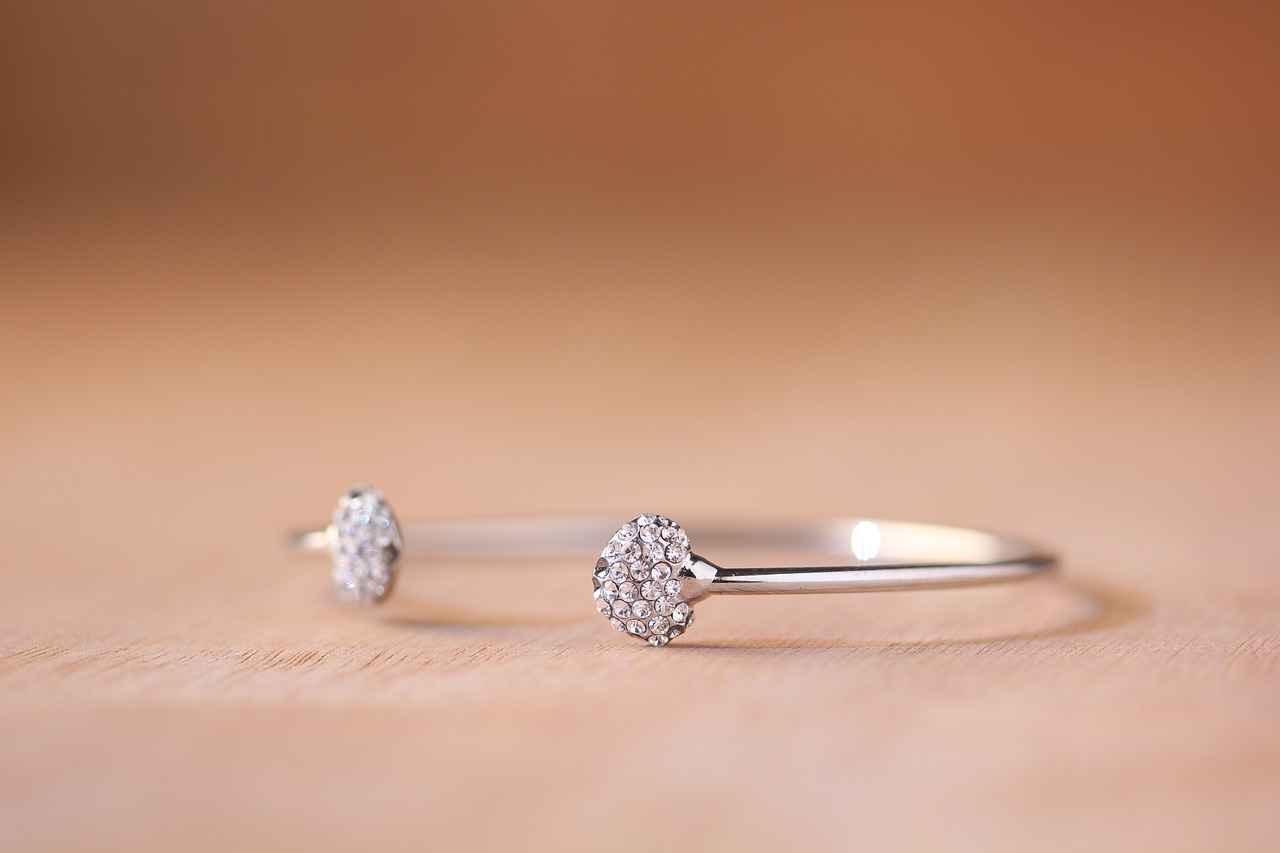
How Seasonal Trends Affect Resale Prices
Understanding how seasonal trends influence the resale prices of jewelry is essential for both buyers and sellers in the market. Various factors, including holidays and fashion seasons, play a significant role in shaping consumer behavior, which in turn affects the value of jewelry over time.
During specific holidays such as Valentine’s Day, Christmas, and Mother’s Day, there is often a notable increase in demand for jewelry. This spike in demand can lead to temporary surges in resale prices, particularly for pieces that are marketed as gifts. Retailers often release special collections during these times, which can create a sense of urgency among buyers. For instance, limited edition pieces or seasonal designs can attract collectors and gift-givers alike, driving up resale values.
The fashion industry operates on a seasonal cycle, and jewelry trends often mirror this rhythm. Each season brings new styles, colors, and materials that resonate with consumers. For example, during the spring and summer months, lighter, more colorful pieces may gain popularity, while autumn and winter might see a rise in demand for richer, darker tones. This seasonal shift can significantly impact resale prices as consumers seek to align their jewelry collections with current trends.
Color trends are not just limited to clothing; they also extend to jewelry. Each season introduces a palette that influences consumer preferences. For instance, pastel colors may dominate spring collections, while jewel tones may be favored in the fall. Jewelry that aligns with these seasonal colors may see increased demand, leading to higher resale values. Sellers who are aware of these trends can strategically time their sales to coincide with peak interest in specific colors.
Many jewelry brands release limited edition pieces during holiday seasons or fashion weeks, which can create a buzz among consumers. These exclusive items often come with a higher price tag and can appreciate in value over time. When reselling, these pieces can command a premium, especially if they are well-marketed and maintain their condition. Collectors are often willing to pay more for unique items that signify a particular season or trend.
- Research Seasonal Trends: Stay informed about upcoming trends in both fashion and jewelry to make educated selling decisions.
- Time Your Sales: Plan to sell pieces during peak seasons when demand is high.
- Highlight Seasonal Features: When listing items for resale, emphasize any seasonal attributes or limited edition status.
- Market Effectively: Use social media platforms to showcase your jewelry, especially during holiday seasons when consumers are actively searching for gifts.
In conclusion, understanding the intricate relationship between seasonal trends and resale prices is vital for anyone involved in the jewelry market. By recognizing how holidays and fashion seasons influence consumer behavior, sellers can strategically position their jewelry for maximum impact and profitability.
Holiday Demand and Special Collections
The jewelry market is significantly influenced by seasonal demand, particularly during holidays when consumers are more inclined to purchase gifts. This phenomenon creates a unique opportunity for both buyers and sellers to capitalize on special collections that are often released during these festive times. In this section, we will explore how holiday demand affects resale values and the implications for jewelry collectors and investors.
Holidays such as Christmas, Valentine’s Day, and Mother’s Day are pivotal moments in the jewelry market. These occasions typically see a surge in demand for jewelry as consumers seek to express love and appreciation through meaningful gifts. The emotional connection associated with these holidays often leads to increased sales, particularly for items like engagement rings, necklaces, and bracelets.
Jewelry brands frequently release limited edition or special collections during holiday seasons. These collections are often characterized by unique designs, exclusive materials, or thematic elements that resonate with the holiday spirit. The limited availability of these pieces can create a sense of urgency among consumers, driving up initial sales and, consequently, affecting their resale value.
- Exclusivity: Limited editions are perceived as more valuable due to their scarcity, making them highly coveted among collectors.
- Brand Recognition: Pieces from well-known brands often maintain higher resale values, especially when they are part of a special collection.
- Timeless Designs: Holiday-themed jewelry that features classic designs can retain value over time, appealing to both sentimental buyers and collectors.
Seasonal trends also play a crucial role in shaping consumer preferences. For instance, certain colors or styles may become popular during specific holidays, influencing what consumers choose to purchase. This, in turn, can affect the resale market as trends dictate which pieces are in demand.
As trends evolve, they can lead to fluctuations in resale prices. For example, if a particular style becomes fashionable during a holiday season, the resale value of similar pieces may increase. Conversely, if a style falls out of favor, the resale value may diminish. Understanding these trends is essential for anyone looking to buy or sell jewelry.
Sellers should take advantage of the increased demand during holidays by timing their sales strategically. Here are some key considerations:
- Market Timing: Listing jewelry for sale just before a holiday can maximize visibility and potential sales.
- Condition and Presentation: Ensuring that the jewelry is in excellent condition and well-presented can significantly impact its perceived value.
- Documentation: Providing certificates of authenticity or original packaging can enhance buyer confidence and justify higher prices.
As consumer preferences continue to evolve, the impact of holiday demand on jewelry resale values will likely remain significant. Sellers who stay informed about trends and consumer behavior will be better positioned to navigate the market successfully. By understanding the dynamics of holiday demand and special collections, both buyers and sellers can make informed decisions that enhance their jewelry experiences.
Seasonal Color Trends
Seasonal color trends play a significant role in the jewelry market, influencing both consumer preferences and resale values. Understanding how these colors shift with the seasons can provide valuable insights for both buyers and sellers. This section delves into the impact of seasonal color trends on jewelry sales and pricing.
Throughout the year, consumers are drawn to different colors that resonate with the changing seasons. For instance, warm hues like deep reds and oranges are popular in the fall, while cool tones such as blues and greens dominate the summer months. This cyclical attraction to color can significantly affect what types of jewelry are in demand during specific times of the year.
Jewelry designers often align their collections with seasonal colors to meet market demand. Spring collections might feature pastel shades, while autumn releases could incorporate richer, earthier tones. This alignment not only attracts buyers but also helps in creating a cohesive brand identity that resonates with consumers’ seasonal moods.
The resale market is also influenced by these seasonal color trends. Jewelry pieces that align with current colors can see a spike in their resale value. For example, a piece featuring vibrant emeralds may fetch a higher price during the summer months when greens are favored. Conversely, items that do not align with seasonal preferences may linger on the market longer, affecting their resale potential.
Holidays and special occasions often dictate color preferences. For example, jewelry featuring red and green may see increased sales during the Christmas season, while pastel colors may dominate during Easter. Recognizing these patterns can help sellers time their listings effectively to maximize profits.
- Research Current Trends: Stay updated on seasonal color forecasts to understand what consumers are interested in.
- Offer Seasonal Promotions: Highlight jewelry that features trending colors during peak seasons to attract buyers.
- Use Social Media: Platforms like Instagram can help showcase seasonal collections and reach a wider audience.
In conclusion, seasonal color trends are a vital aspect of the jewelry market, influencing both consumer preferences and resale prices. By understanding these trends, sellers can strategically position their offerings to align with consumer desires, ultimately enhancing their profitability in the resale market.

What to Consider When Reselling Jewelry?
Reselling jewelry can be a rewarding venture, but it requires careful consideration of multiple factors to ensure that you maximize your profits. Understanding the intricacies of the resale market is essential for both novice and experienced sellers. This section delves into the key aspects that can significantly influence the resale value of your jewelry.
One of the most critical factors in reselling jewelry is market timing. Selling during peak seasons, such as the holiday season or around special occasions like anniversaries and weddings, can lead to higher demand and better prices. Identifying trends and understanding when consumers are most likely to purchase jewelry can make a substantial difference in your profits.
Having the right documentation is crucial when reselling jewelry. This includes certificates of authenticity, appraisals, and receipts. Proper documentation not only assures potential buyers of the jewelry’s legitimacy but also enhances its value. Buyers are more likely to pay a premium for pieces that come with verified provenance and detailed history.
The condition of your jewelry plays a vital role in determining its resale value. Items that are well-maintained, free of scratches, and in their original packaging tend to fetch higher prices. It is advisable to get your pieces cleaned and repaired if necessary before listing them for sale. Investing in maintenance can pay off significantly in the resale market.
Choosing the right platform to sell your jewelry can impact your success. Online marketplaces like eBay, Etsy, and specialized jewelry sites provide vast audiences but come with varying fees and competition levels. Alternatively, local jewelers or consignment shops can offer personalized service and potentially higher returns, albeit with limited reach. Researching each platform will help you find the best fit for your items.
Pricing your jewelry correctly is essential for a successful sale. Conduct thorough research on similar items to gauge current market prices. Consider factors such as brand reputation, materials used, and design trends. Setting your price too high may deter buyers, while pricing it too low could lead to missed profits. A balanced approach is key to attracting potential buyers.
Staying informed about current jewelry trends can significantly impact your resale success. Trends can shift rapidly, influenced by fashion influencers, celebrity endorsements, and social media platforms. Understanding what styles are currently in demand can help you time your sale effectively and maximize your returns. Keeping an eye on industry news and consumer preferences will give you an edge in the market.
Authenticity is paramount in the jewelry market. Buyers are increasingly cautious about purchasing items that may not be genuine. Providing proof of authenticity through certificates or appraisals can significantly increase buyer confidence and, consequently, resale value. Investing in verification can be a worthwhile step in your resale journey.
In conclusion, reselling jewelry is not merely about putting an item on the market; it involves strategic planning and an understanding of various factors that influence value. By considering market timing, proper documentation, condition, and current trends, you can enhance your chances of achieving a successful sale.
Timing Your Sale for Maximum Profit
in the jewelry resale market is essential for achieving the best financial returns. Understanding the dynamics of the market, including seasonal trends, consumer behavior, and economic factors, can significantly influence your selling strategy. This section will explore how to identify the optimal times to sell your jewelry, ensuring you capitalize on trends and demand.
Timing can make or break your resale experience. Selling jewelry at the right moment can lead to higher prices and quicker sales. But how do you determine the best time? It involves analyzing several factors:
- Market Demand: Research current trends and consumer interest. High demand can lead to increased prices.
- Seasonality: Certain times of the year, like holidays, see a spike in jewelry purchases.
- Economic Conditions: The overall economic climate can affect consumer spending power.
Jewelry sales often peak during specific seasons. For instance, Valentine’s Day, Mother’s Day, and the holiday season are prime times for jewelry sales. During these periods, consumers are more likely to purchase gifts, leading to a surge in demand. If you plan to sell your jewelry, consider listing it a few weeks before these events to maximize visibility and potential offers.
Staying updated with jewelry trends is crucial. Fashion trends can shift quickly, affecting consumer preferences. For example, if a particular style or gemstone becomes trendy, selling pieces that align with these trends can enhance your chances of a profitable sale. Regularly check fashion magazines, social media platforms, and influencer recommendations to gauge what’s in vogue.
Economic conditions play a significant role in the resale market. During times of economic prosperity, consumers are more likely to spend on luxury items, including jewelry. Conversely, during economic downturns, people may hold off on non-essential purchases. Keeping an eye on economic indicators, such as employment rates and consumer confidence indexes, can help you choose the right moment to list your jewelry for sale.
Social media is a powerful tool for identifying when to sell your jewelry. Platforms like Instagram and Pinterest can provide insights into trending styles and consumer interests. Engaging with jewelry-related hashtags and following influencers can give you a sense of what is popular and when it might be the best time to sell.
Keeping an eye on both local and online marketplaces will help you understand pricing trends and demand levels. Websites like eBay, Poshmark, and specialized jewelry resale platforms can provide valuable insights into what similar items are selling for. By monitoring these platforms, you can identify when the market is favorable for your jewelry type.
In summary, timing your jewelry sale is a multifaceted process that involves understanding market demand, seasonal trends, economic conditions, and social media influences. By staying informed and strategically planning your sale, you can maximize your profits and ensure a successful transaction. Remember, the right timing not only enhances your chances of a good sale but also helps you connect with buyers who appreciate the value of your jewelry.
Documentation and Provenance Importance
Documentation and provenance are crucial elements in the jewelry resale market, significantly influencing both buyer confidence and pricing. When a piece of jewelry is accompanied by proper documentation, it not only provides a history of the item but also assures potential buyers of its authenticity and quality. This section delves into how these factors enhance the overall resale value of jewelry.
Having proper documentation serves as a guarantee of authenticity, which is essential for buyers. Documents such as certificates of authenticity, appraisals, and receipts can validate the item’s origin and craftsmanship. This validation is particularly important for high-value pieces, where buyers are more cautious about their investments.
The provenance of a jewelry piece refers to its history of ownership. A well-documented provenance can significantly enhance buyer confidence, as it provides a narrative that connects the buyer to the piece’s past. For instance, if a piece has a history of ownership by a notable figure or has been featured in significant events, it becomes more desirable. Buyers often seek items with a rich backstory, which can lead to higher resale prices.
Certification from reputable organizations, such as the Gemological Institute of America (GIA), can add tremendous value to jewelry. Certified pieces are recognized for their quality and authenticity, making them more attractive to potential buyers. For instance, a diamond with a GIA certification is often perceived as more valuable than a similar diamond without certification. This is because the certification provides an unbiased assessment of the diamond’s quality, including its cut, clarity, color, and carat weight.
Jewelry without proper documentation may face significant price reductions during resale. Buyers are often hesitant to invest in items lacking verification, which can lead to lower offers. In contrast, well-documented pieces can command higher prices due to the added assurance of their quality and authenticity. For example, a vintage piece with original receipts and a certificate of authenticity can fetch a price significantly higher than similar items without such documentation.
- Keep Receipts: Always retain purchase receipts, as they serve as proof of authenticity.
- Obtain Certifications: For high-value items, seek certification from recognized gemological institutions.
- Document Provenance: Maintain records of previous ownership and any historical significance associated with the piece.
- Take Professional Appraisals: Regular appraisals can help maintain an updated value for your jewelry based on current market trends.
In conclusion, the importance of documentation and provenance in the jewelry resale market cannot be overstated. These elements not only enhance buyer confidence but also significantly impact pricing. By ensuring that your jewelry is well-documented, you can maximize its resale value and appeal to potential buyers.
Frequently Asked Questions
- How do jewelry trends affect resale prices?
Jewelry trends play a significant role in determining resale prices. As styles and materials evolve, the demand for certain pieces can fluctuate, leading to changes in their market value. For instance, if a particular design becomes trendy, pieces that fit that aesthetic may see a spike in resale value.
- What should I look for when buying vintage jewelry?
When buying vintage jewelry, consider the piece’s condition, authenticity, and provenance. A well-documented history can enhance its value, while signs of wear or poor repairs might decrease it. Always verify the authenticity to ensure you’re making a sound investment.
- Are seasonal trends relevant in the jewelry market?
Absolutely! Seasonal trends can cause temporary spikes in resale prices, especially around holidays. For instance, jewelry that features seasonal colors or themes often sees increased demand during specific times of the year, making it a great time to sell.
- How can I maximize the resale value of my jewelry?
To maximize resale value, timing your sale is crucial. Research market trends and aim to sell when demand is high. Additionally, having proper documentation and certification can boost buyer confidence, further enhancing the value of your piece.

